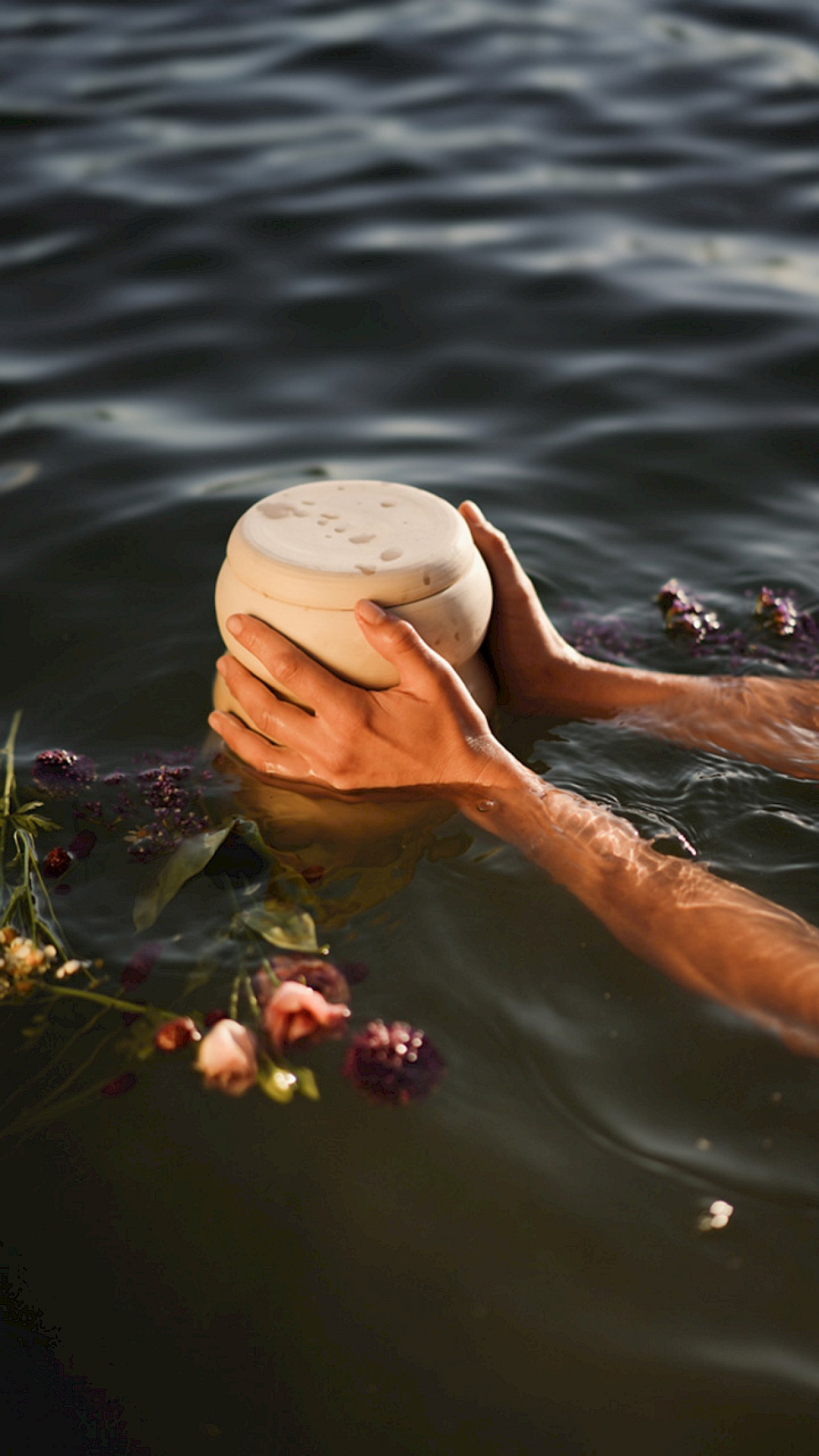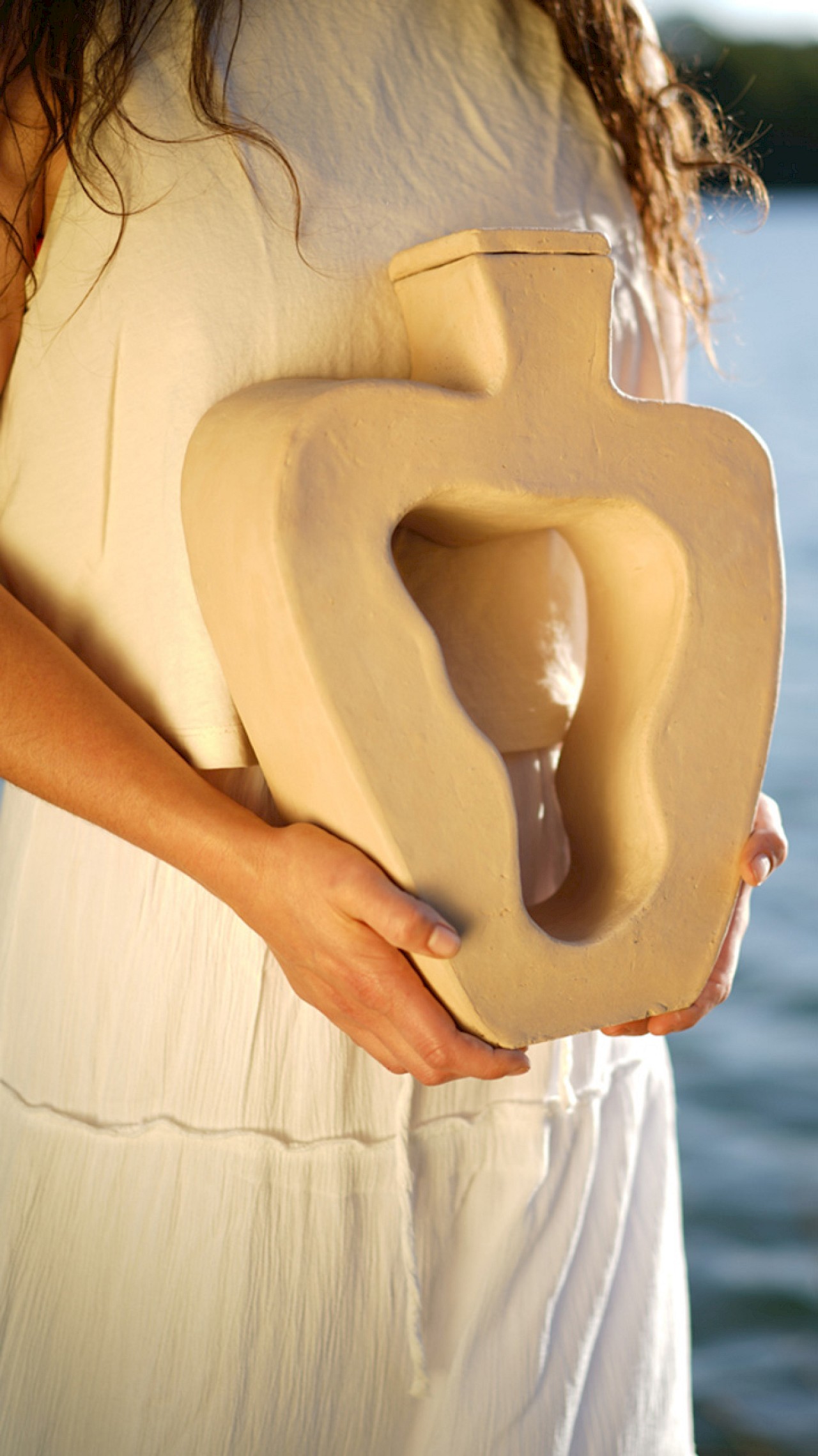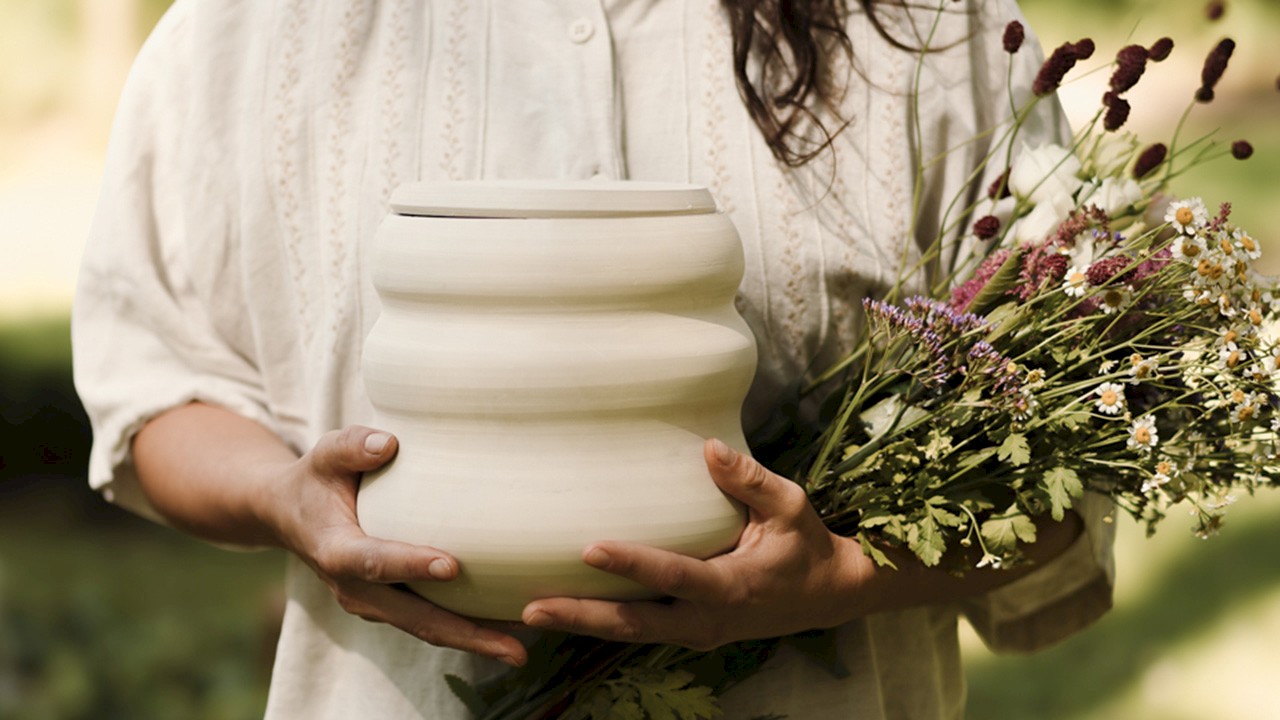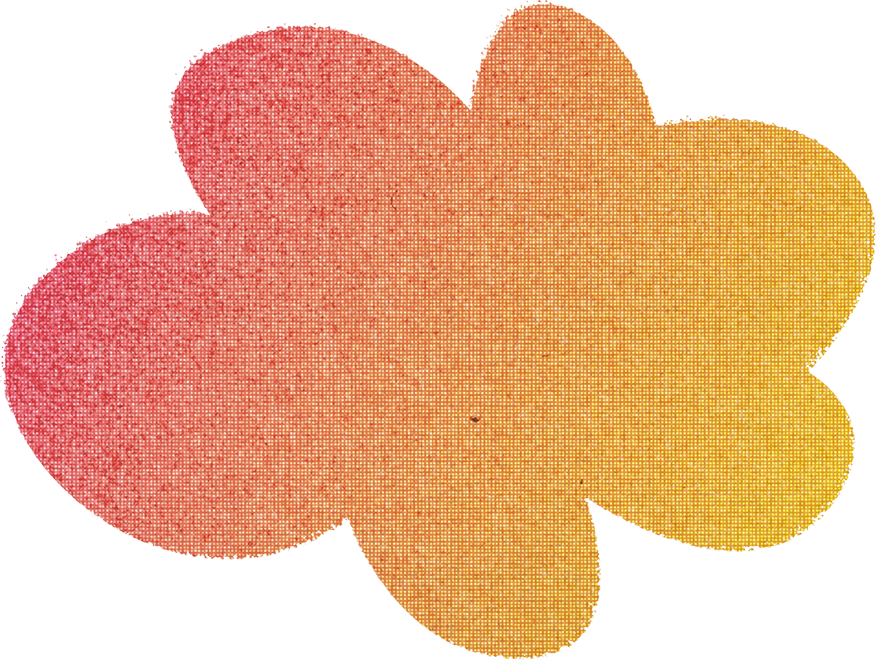
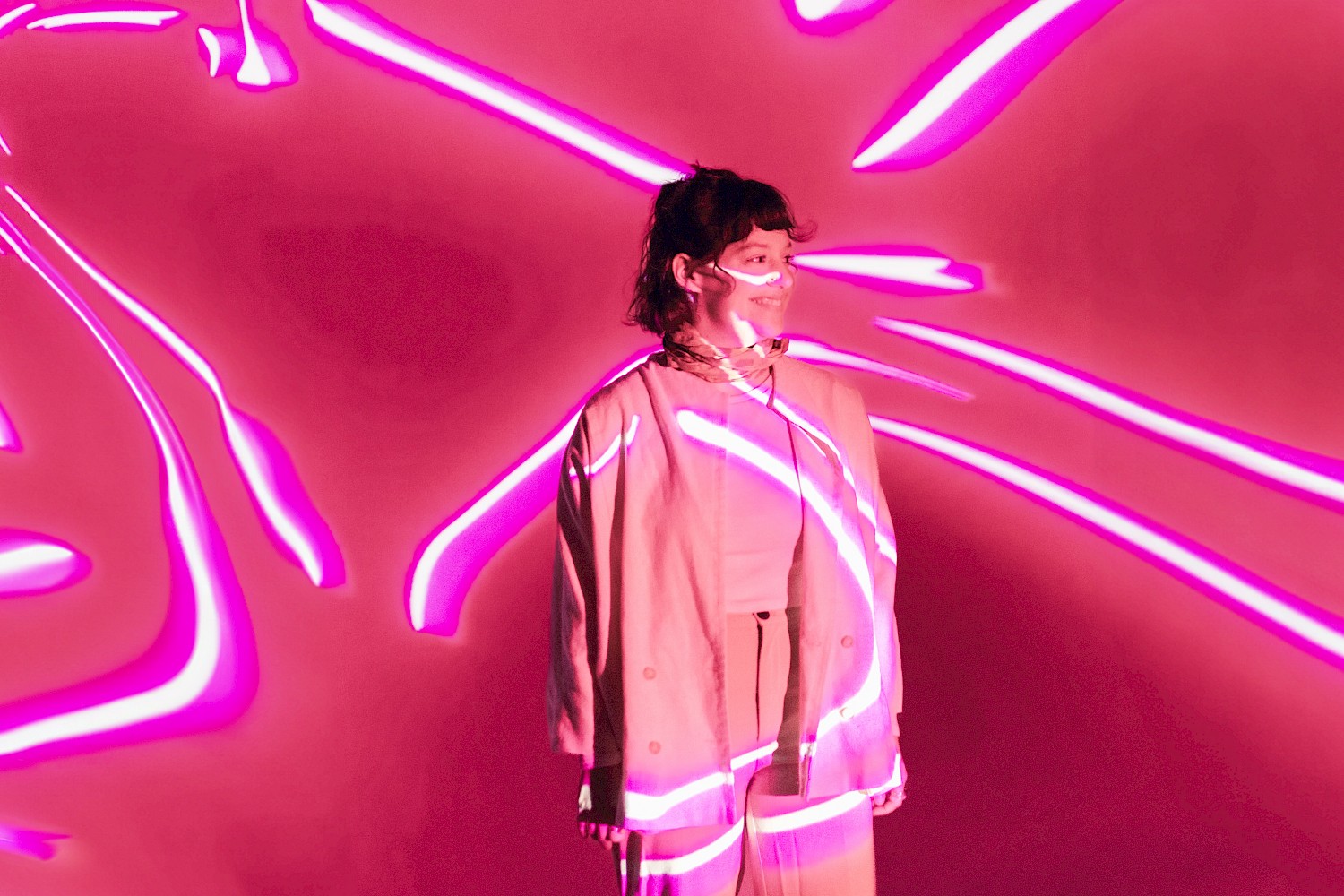


Eva
Rosenthal
Studying at MSD allowed Eva to experience exciting discoveries and personal growth, while reigniting and developing her passion for ceramics. She draws her greatest inspiration from everyday life, being fascinated by the ability to transform insights and personal feelings into thoughtful product designs that consider social and ethical contexts and are understandable and applicable to everyone. Her greatest strength lies in handling sensitive design topics. She enjoys addressing both scientific and aesthetic aspects and integrating them. Eva most enjoyed the interaction with her fellow students and professors, and "Achtbar" was naturally the perfect place to celebrate these moments.
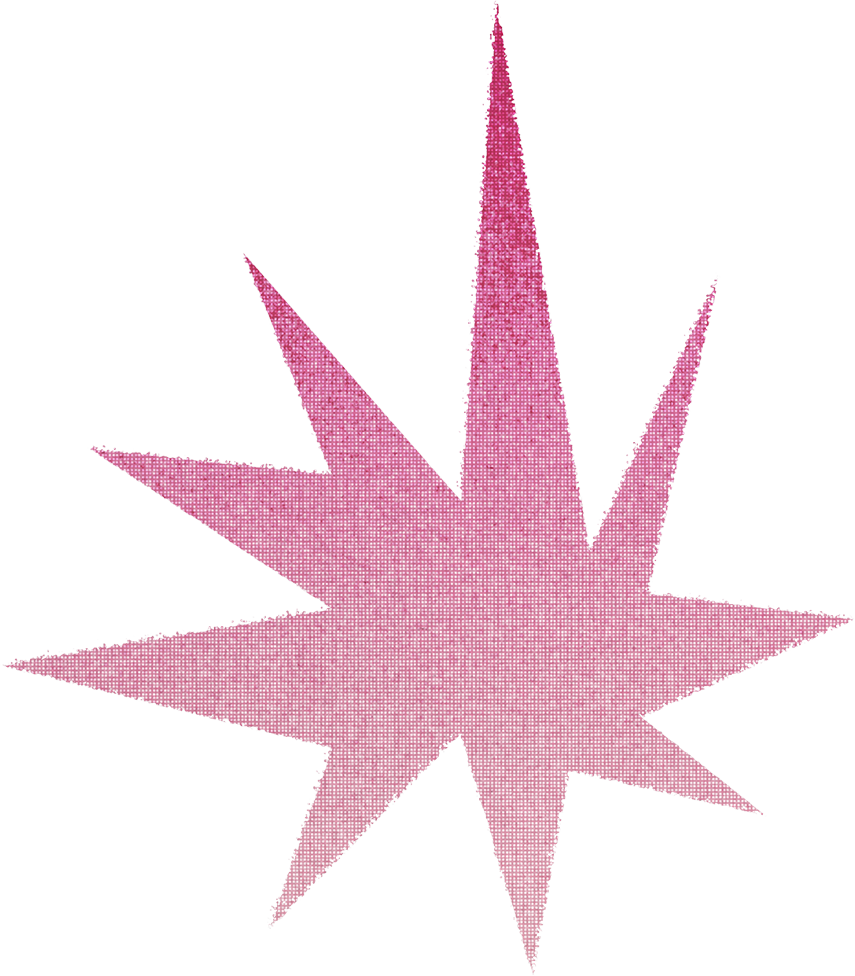
reTURN
More than a biologically degradable urn
What is your project about?
My work focuses on the creation of a completely biodegradable urn and the philosophical and psychological exploration of the "death silence" surrounding dying. The "retURN" features a material cycle in which leftover clay from the clinker industry and construction material tests are processed and transformed into an urn. The urn is buried during the burial ceremony and thus becomes part of the earth again, creating a "cycle of life."
What inspired you in particular?
Given the fact that 75% of all funerals are cremations, it is a topic that many people have to confront. However, this specific topic is often silenced and ignored. The "retURN" aims to provide a space for communication and showcase the individuality of funeral practices through its unique production.
How did you grow during the process?
The process of my bachelor's project forced me to leave my comfort zone and address sensitive topics. This has enriched me greatly.
How could the project continue / develop further?
Through collaboration with several funeral homes, crematoria, the brickwork company 'Hagemeister,' and other experts, I was able to establish some valuable contacts. I will continue to research additional industrial manufacturing methods and seek production partners.
Geprüft von: Prof. Steffen Schulz & Dipl.-Des. Matthias Burhenne
